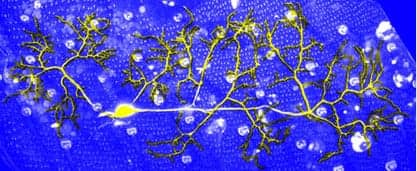The January 2009 issue of Sports Technology, published by Wiley-Blackwell, spotlights recent developments that seek to close the gap between able-bodied athletes and para-athletes, with two articles highlighting running prostheses.
The first article, titled Biomechanics of double transtibial amputee sprinting using dedicated sprinting prostheses, compares the sprinting mechanics data of able-bodied sprinters with that of a double transtibial amputee by examining the overall kinetics and the kinetics at the joints—while sprinting at maximum speed.
The carbon blade used by the amputee sprinter has a significant advantage in both energy storage and return in fast sprinting, in comparison to the healthy human ankle joint. The blade allows the disabled sprinter to deliver the same level of performance as an able-bodied athlete—but at a lower metabolic cost.
The other article, titled [removed]Lower Extremity Leg Amputation: an advantage in running?[/removed], describes the clinical view of fitting an amputee with a prosthetic leg.
The paper provides a general overview on prosthesis technology, highligting the challenges and disadvantages of a prosthetic fitting, such as the difficulties in selection, fitting, and the alignment adaptation of the socket; and other issues such as the compensatory strategies of the amputee.
Vol 1, Issue 4-5. To view the full table of contents, click here.
The international journal aims to establish stronger links between industrial and academic research, and enhance communication between athletes, coaches, engineers, scientists, biomechanists, managers, and administrators involved with sports and sports technology. Design and development of sports products and infrastructure require close collaboration between all stakeholders and good understanding of life and sports sciences, principles of economy, and engineering. The publication is inter-and transdisciplinary and holistic in its approach.
Sports Technology publishes articles that are classified either as scientific research articles (focusing on the scientific aspects of sports technology research) or technical research and development articles (focusing on the commercial product design and development aspects).
[Source: Medical News Today]



